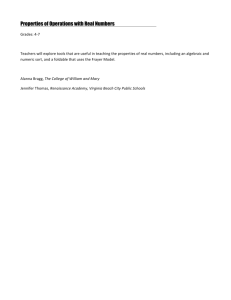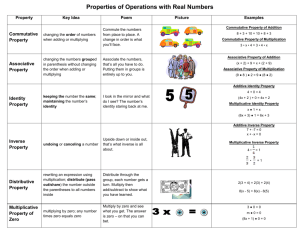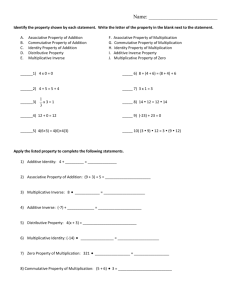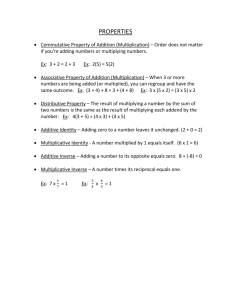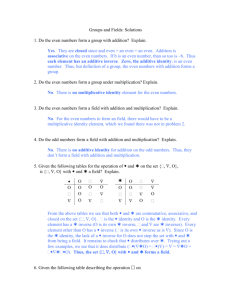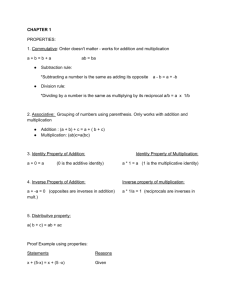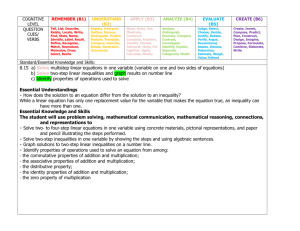Properties of operations Preassessment
advertisement
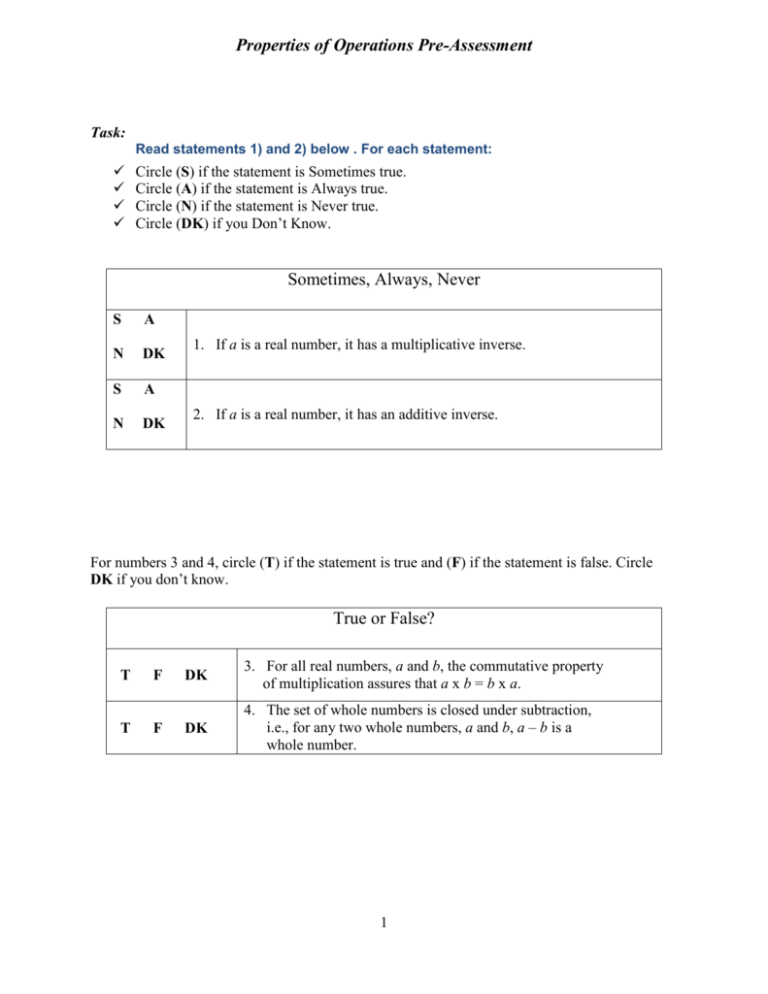
Properties of Operations Pre-Assessment Task: Read statements 1) and 2) below . For each statement: Circle (S) if the statement is Sometimes true. Circle (A) if the statement is Always true. Circle (N) if the statement is Never true. Circle (DK) if you Don’t Know. Sometimes, Always, Never S A N DK S A N DK 1. If a is a real number, it has a multiplicative inverse. 2. If a is a real number, it has an additive inverse. For numbers 3 and 4, circle (T) if the statement is true and (F) if the statement is false. Circle DK if you don’t know. True or False? T T F F DK 3. For all real numbers, a and b, the commutative property of multiplication assures that a x b = b x a. DK 4. The set of whole numbers is closed under subtraction, i.e., for any two whole numbers, a and b, a – b is a whole number. 1 Below is a list of properties of operations: 1. 2. 3. 4. 5. 6. 7. 8. 9. Associative property of addition Commutative property of addition Additive identity property of 0 Additive inverse Associative property of multiplication Commutative property of multiplication Multiplicative identity property of 1 Multiplicative inverse Distributive property of multiplication over addition Below are the steps in the solution of a linear equation. Some of the reasons for the steps are completed. Others are left blank. Please place in the blank the number of the property from above that justifies the step. Numbers may be used more than once and some numbers may not be used. If you don’t know, put DK in the blank. 3x – 5 + x = 7 Given equation 3x + (-5) + x = 7 Definition of subtraction 3x + x + (-5) = 7 __________ (3 + 1) x + (-5) = 7 __________ 4x + (- 5) = 7 Addition fact (4x + (-5)) + 5 = 7 + 5 Addition property of equality (4x + (-5)) + 5 = 12 Addition fact 4x + (-5 + 5) = 12 __________ 4x + 0 = 12 __________ 4x = 12 __________ ¼ (4x) = 12 (¼) Multiplication property of equality ¼ (4x) = (3 . 4) (¼) Multiplication fact (¼ . 4)x = 3 (4 . ¼) __________ 1x = 3 . 1 __________ x=3 __________ 2

